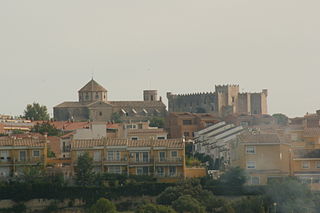 W
WAt the Battle of Altafulla, a Spanish division led by Joaquín Ibáñez Cuevas y de Valonga, Baron de Eroles clashed with an Imperial French division under the command of David-Maurice-Joseph Mathieu de La Redorte. Believing he faced only a single battalion, Eroles attacked in a heavy fog and was beaten by 8,000 French soldiers. The action occurred during the Peninsular War, part of the Napoleonic Wars. The battle was fought near Altafulla, 10 kilometres (6.2 mi) northeast of Tarragona, Catalonia, Spain.
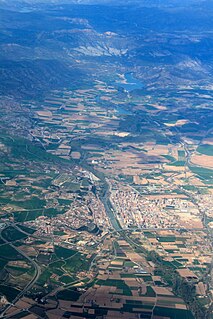 W
WThe Balaguer Offensive was an offensive carried out by the Spanish Republican Army around Balaguer during the Spanish Civil War. The offensive consisted in a series of counterattacks in the spring and summer of 1938 after the disastrous Aragon Offensive. The offensive was a failure for the Spanish Republic and many lives and military material were wasted.
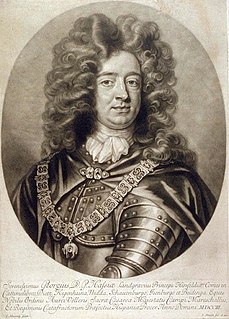 W
WThe Landing at Barcelona was a failed Allied attempt in May 1704 during the War of the Spanish Succession to capture the city of Barcelona from its Spanish pro-Bourbon defenders.
 W
WThe Siege of Barcelona took place between 14 September and 19 October 1705 during the War of the Spanish Succession when a multinational Grand Alliance army led by Lord Peterborough, supporting the Habsburg pretender to the Spanish throne, captured the city of Barcelona from its Spanish Bourbonic defenders, most of whom then joined the Habsburg army.
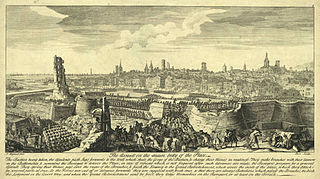 W
WThe Siege of Barcelona was a battle at the end of the War of Spanish Succession, which pitted Archduke Charles of Austria against Philip V of Spain, backed by France in a contest for the Spanish crown.
 W
WThe Battle of Almenar also referred to as Almenara was a battle in the Iberian theatre of the War of the Spanish Succession.
 W
WThe Battle of Martorell is one of the episodes of the Reapers' War in Catalonia that took place from 20 to 23 January 1641 and ended in a victory for the Spanish troops.
 W
WThe Battle of Montjuïc took place on 26 January 1641 during the Reapers' War. A Spanish force under Pedro Fajardo launched an attack on the Catalan army led by Francesc de Tamarit, with French cavalry support.
 W
WThe Battle of the Black Mountain was fought from 17 to 20 November 1794 between the army of the First French Republic and the allied armies of the Kingdom of Spain and the Kingdom of Portugal. The French, led by Jacques François Dugommier defeated the Allies, who were commanded by Luis Firmín de Carvajal, Conde de la Unión. Though the Spanish right wing held, its left flank was driven back on the first day's fighting. On the last day of the battle, the French overran a key position and put the Spanish army to rout. The battle was remarkable in that both army commanders were slain. A Spanish artillery shell killed Dugommier early in the battle and Dominique Catherine de Pérignon assumed command of the French army. De la Union was shot dead while leading a cavalry charge on the last day of the fighting and was temporarily replaced by Jerónimo Girón-Moctezuma, Marquis de las Amarilas. The French victory led to the capture of Figueres and the Siege of Roses (Rosas), a port in Catalonia.
 W
WThe two Battles of the Bruch (Spanish: Batallas del Bruch; Catalan: Batalles del Bruc) were engagements fought successively between a French columns commanded by Brigadier General François de Schwarz and General of Division Joseph Chabran, and a body of Catalan volunteers and mercenaries led by General Antoni Franch i Estalella and Joan de la Creu Baiget, during the Peninsular War. The result of these battles and actions fought at El Bruc, near Barcelona, Catalonia, between 6–14 June 1808 was a Spanish victory. The Spanish also captured a French Imperial Eagle, adding to defeat a humiliation for the French army.
 W
WThe Battle of Cardadeu on 16 December 1808 saw an Imperial French corps led by Laurent Gouvion Saint-Cyr assault a Spanish force commanded by Juan Miguel de Vives y Feliu and Theodor von Reding. Saint-Cyr won the engagement by forming most of his troops into gigantic attack columns and smashing through the Spanish lines. Cardedeu is located 17 kilometres (11 mi) northeast of Barcelona, Spain. The action occurred during the Peninsular War, part of the Napoleonic Wars.
 W
WThe Battle of Castellón was an ambush delivered against a French Imperial detachment under General Reille near Girona during the Peninsular War (1807–14).
 W
WIn the Battle of Cervera a Spanish force led by Luis Roberto de Lacy attacked a series of Imperial French garrisons belonging to the VII Corps of Marshal Jacques MacDonald. The actions were highly successful and netted nearly 1,000 enemy prisoners. The clashes occurred during the Peninsular War, part of the Napoleonic Wars. The largest garrison was located at Cervera which is located about 55 kilometres (34 mi) east of Lleida, in Catalonia, Spain.
 W
WThe Battle of Cissa was part of the Second Punic War. It was fought in the fall of 218 BC, near the Celtic town of Tarraco in north-eastern Iberia. A Roman army under Gnaeus Cornelius Scipio Calvus defeated an outnumbered Carthaginian army under Hanno, thus gaining control of the territory north of the Ebro River that Hannibal had just subdued a few months prior in the summer of 218 BC. This was the first battle that the Romans had ever fought in Iberia.
 W
WThe Battle of the Col de Panissars was fought on 30 September and 1 October 1285 between the forces of Philip III of France and Peter III of Aragon. It was a severe defeat for the French, who were already retiring over the Pyrenees when the Aragonese fell on them.
 W
WThe Battle of Ibera, also known as the Battle of Dertosa, was fought in the spring of 215 BC on the south bank of the Ebro River near the town of Ibera and was part of the Second Punic War. A Roman army, under the command of the brothers Gnaeus and Publius Scipio, defeated a similarly sized Carthaginian army under Hasdrubal Barca. The Romans, under Gnaeus Scipio, had invaded Iberia in late 218 BC and established a foothold after winning the Battle of Cissa. This lodgement, on the north-east Iberian coast, between the Ebro and the Pyrenees, blocked the route of any reinforcements from Iberia for the army of Hannibal Barca, who had invaded Italy from Iberia earlier in the year. Hasdrubal attempted to evict the Romans in 217 BC, but this ended in defeat when the Carthaginian naval contingent was mauled at the Battle of Ebro River.
 W
WThe Third Siege of Girona occurred in northern Catalonia, Spain during the Napoleonic Wars. A significant event of the Peninsular War, France's Grande Armée lay siege to the town of Girona for seven months, from 6 May to 12 December 1809. Girona was strategically important because it controlled the main road between France and Spain.
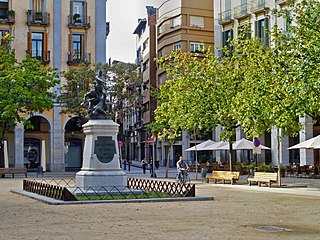 W
WThe Battle of Gerona on 20 and 21 June 1808 saw an Imperial French division led by Guillaume Philibert Duhesme try to overrun a Spanish garrison commanded by Lieutenant Colonels O'Donovan and O'Daly. The French assault failed and the attackers withdrew. Girona is located about halfway between the Franco-Spanish border and Barcelona on the Autovía A-7. The action occurred during the Peninsular War, part of the Napoleonic Wars.
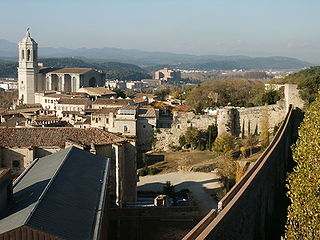 W
WThe Second Siege of Gerona was the second unsuccessful French attempt to capture the city of Girona during the Peninsular War, part of the Napoleonic Wars. Girona is located near the present-day Autovía A-7, about halfway between the Franco-Spanish border and Barcelona, in Catalonia.
 W
WIn the Siege of Lérida from 29 April to 13 May 1810, an Imperial French army under Louis Gabriel Suchet besieged a Spanish garrison led by Jaime García Conde. On 13 May, García Conde surrendered with his 7,000 surviving soldiers. Lleida (Lérida) is a city in the western part of Catalonia. Margalef is located on Route N-240 about 10 kilometres (6 mi) southeast of Lérida. The siege occurred during the Peninsular War, part of the Napoleonic Wars.
 W
WThe Battle of Manresa and Battle of Vilafranca from 21 March to 5 April 1810 saw a Spanish division led by Juan Caro and Luis González Torres de Navarra, Marquess of Campoverde attack an Imperial French brigade commanded by François Xavier de Schwarz. Caro's division first surprised the town of Vilafranca del Penedès in March and captured its 800-man garrison made up of troops from the Confederation of the Rhine. Vilafranca is located 35 kilometres (22 mi) west of Barcelona.
 W
WThe Battle of Molins de Rei or Battle of Molins de Rey or Battle of Molins del Rey saw an Imperial French corps led by Laurent Gouvion Saint-Cyr attack a Spanish army temporarily led by Theodor von Reding and the Conde de Caldagues because its commander Juan Miguel de Vives y Feliu was absent. Saint-Cyr outmaneuvered his opponents, distracting them with a false attack in front while sending the bulk of his force across Llobregat River in a turning movement around the Spanish right flank. The Spanish defensive lines crumbled and the French captured 1,200 soldiers, all the Spanish artillery and Caldagues himself. The Peninsular War engagement was fought near Molins de Rei, located 15 kilometres (9 mi) west of Barcelona, Catalonia, Spain.
 W
WIn the Battle of Montserrat a force of Spanish irregulars led by Joaquín Ibáñez, Baron de Eroles defended Montserrat Mountain against two Imperial French divisions under the command of Marshal Louis Gabriel Suchet. The minor action occurred during the Peninsular War, part of the Napoleonic Wars. The battle was fought near the Santa Maria de Montserrat Monastery, which is located on the mountain 36 kilometres (22 mi) northwest of Barcelona, Catalonia, Spain.
 W
WThe Siege of Roses or Siege of Rosas from 7 November to 5 December 1808 saw an Imperial French corps led by Laurent Gouvion Saint-Cyr invest a Catalan and Spanish garrison commanded by Peter O'Daly. After a siege lasting a month in which the haven and town of Roses was captured and the nearby Trinity Castle invested by over 13,000 French and Italian infantry, artillery and cavalry with heavy siege trains on the hills above, the Citadel was surrendered to the Napoleonic forces. Roses (Rosas) is located 43 kilometres (27 mi) northeast of Girona, Catalonia, Spain. The action occurred during the Peninsular War, part of the Napoleonic Wars.
 W
WThe Siege of Roses began on 28 November 1794 and lasted until 4 February 1795 when the Spanish garrison abandoned the port and the forces of the First French Republic took control. Dominique Catherine de Pérignon commanded the French army and Domingo Salvator Izquierdo led the Spanish defenders. The siege took place during the War of the Pyrenees which was part of the French Revolutionary Wars. The war ended in July 1795 and Roses was soon restored to Spain. Roses is a coastal city in northeastern Spain, located 43 kilometres (27 mi) northeast of Girona, Catalonia.
 W
WThe Siege of Tortosa pitted an Imperial French army under General Louis Gabriel Suchet against the Spanish defenders of Tortosa led by General Lilli, Conde de Alacha. The siege progressed swiftly and Alacha surrendered on 2 January 1811. Tortosa is a city that lies on the Ebro River about 80 kilometres (50 mi) southwest of Tarragona. The action took place during the Peninsular War, part of the Napoleonic Wars.
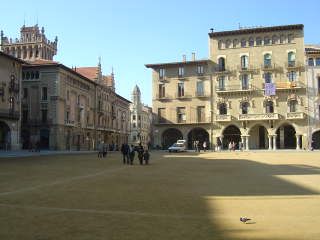 W
WThe Battle of Vich or Battle of Vic on 20 February 1810 saw a Spanish force under Henry O'Donnell suddenly attack a 5,500-man Imperial French division led by Joseph Souham. After bitter fighting the French prevailed, forcing O'Donnell's men to retreat. The engagement occurred during the Peninsular War, part of the Napoleonic Wars. Vic is located 60 kilometres (37 mi) north of Barcelona in the province of Catalonia.